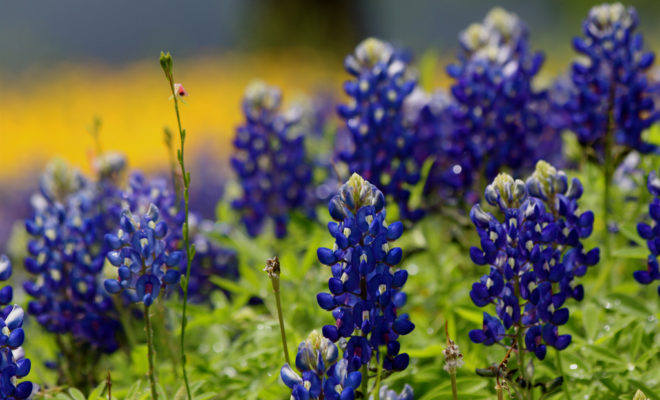Bonkers for bluebonnets? Sweet on sweet autumn sage? Well, you’re in luck because parts of the Texas Hill Country require gardeners to be part heat and drought resistant just like the plants they intend to prune and pander to (but enjoy)! And plants that are native species to your part of the Hill Country go bananas and get better established with each year that passes, leaving your garden just as beautiful as if you’d planned it. Indian blanket, for example, comes in beautiful shades of orange, red, and gold and does well in heat and full sun. Prairie verbena blooms in magenta and purple and does well in gravelly soil and hot sun. And the red bird of paradise looks so gorgeously tropical with fern-like foliage and red/orange flowers, but it also can handle the heat and drought and can grow up to 10 feet in height!
Lifestyle
How to Create a Winning Heat and Drought-Resistant Texas Hill Country Garden
Look for Less Care- and Water-Intensive Plants

Photo: Pixabay
Low-maintenance and hardier plant species that can suit the Texas Hill Country environment are a marvel to look at and enjoy when you know they’re not so care- and water-intensive. Similarly, they’ll require fewer fertilizers and special soils to germinate. They’re also beneficial to local wildlife (bees, birds, butterflies, and so on.) Hardy grasses, cacti, shrubs and trees that are native to the area can handle the summer heat and can often be less appetizing to deer…but double check with a garden center on that before you run out and buy expensive species. In drought conditions, deer will eat just about anything.
Look for Native Species That Thrive With Low Rainfall

Photo: Flickr/Chad Sparkes
When looking at drought or heat conditions in your area, it’s essential that you not bemoan the fact that you can’t have lush, tropical plants. Try to garden similar to areas that have low rainfall amounts in order to keep the ethics of it all in check. Pouring tons of water on your non-native species and expecting that to change is just not going to happen. But that doesn’t mean you have to give up the ghost on having a nice garden. If you do need or want to plant water-intensive, tropical species, try container gardening as opposed to planting them in the ground.
Bees, Butterflies, and Hummingbirds Will Love You For It!

Photo: Pixabay
Some of the more appealing native species for drought and heat conditions include (but aren’t limited to just this list, so again, check with your local garden center to see what’s available) four-nerve daisy, witch-hazel, Texas pistachio trees, and of course the aforementioned bluebonnets and sweet autumn sage. And considering the Monarch migration that occurs over parts of Texas, you might simply be doing them a favor and providing a restful place to seek some refuge on their journey! Hummingbirds, in particular, are quite keen on coral honeysuckle, which is also a native species that blooms beautifully and is less water- and care-intensive.
Sources:



